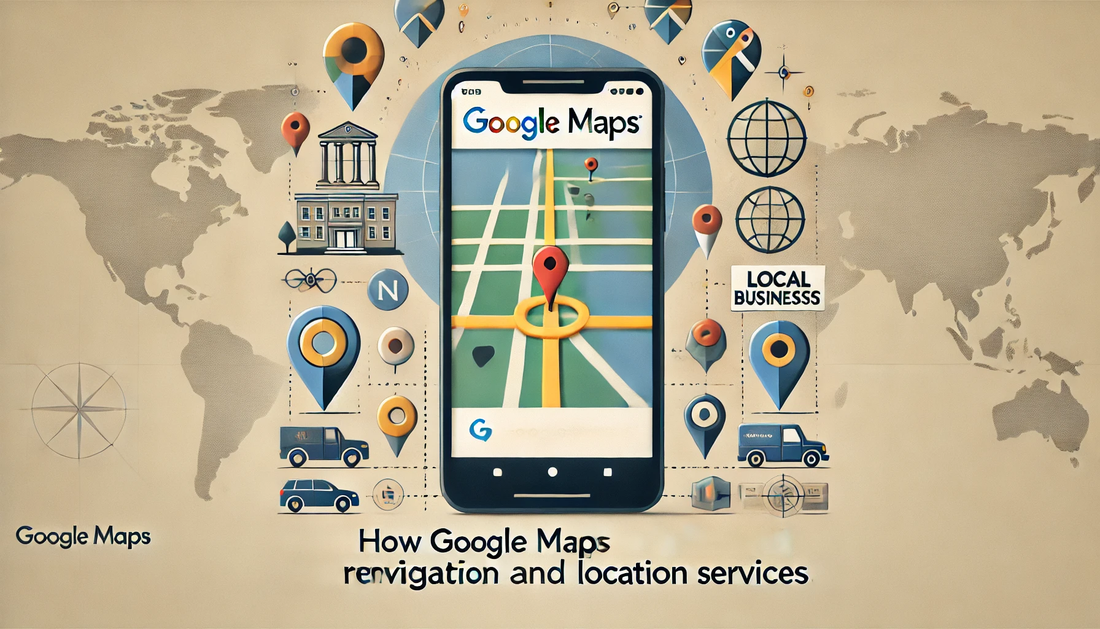Google Maps wasn’t just another map app when it launched in 2005—it was a groundbreaking innovation that forever changed how we navigate the world.
What began as a simple tool for finding directions quickly evolved into a platform that redefined navigation, local discovery, and real-time location services. Today, Google Maps is indispensable, seamlessly integrated into daily life for billions of people.
For startup founders, the story of Google Maps offers a masterclass in how to innovate, disrupt, and dominate a market.
Let’s explore how Google Maps revolutionized location-based services and uncover actionable takeaways that startups can use to transform their industries.
Innovating Beyond the Basics: The Power of Real-Time Data
From the outset, Google Maps wasn’t content with just offering static directions. It incorporated real-time traffic data, showing users the fastest routes and avoiding congestion.
This move transformed Google Maps from a basic tool to a dynamic service that anticipated users’ needs and adapted in real-time.
Actionable takeaway: Look beyond basic functionality. By incorporating real-time data or predictive technologies, you can elevate your product from a tool to an indispensable resource that users rely on every day.
Seamless Integration: Becoming a Platform, Not Just a Product
Google Maps quickly evolved into more than just a navigation app. It integrated with Google’s other services like Search and Street View, allowing users to explore neighborhoods, find businesses, and even walk virtually through cities.
This seamless integration created a comprehensive platform that offered much more than directions.
Actionable takeaway: Think of your product as part of a larger ecosystem. By integrating with complementary services, you can offer users a more holistic and valuable experience, creating a platform rather than just a product.
Personalization at Scale: Anticipating User Needs
One of Google Maps’ strengths is its ability to anticipate what users need before they ask.
By leveraging location data, search history, and user preferences, Google Maps can suggest restaurants, gas stations, and shortcuts tailored to individual users’ preferences and routines.
Actionable takeaway: Personalization is key to user retention. Use data to understand your customers’ preferences and needs, and offer tailored experiences that make them feel like your product is built just for them.
Expanding into New Markets: Local Guides and Business Listings
Google Maps wasn’t content with being just a navigation tool—it expanded into local discovery and business services.
With features like Local Guides and business listings, Google Maps became a go-to platform for finding local businesses, reading reviews, and exploring new areas.
Actionable takeaway: Look for opportunities to expand your product’s offerings. By adding new features that align with your core service, you can tap into new markets and create additional revenue streams.
Monetizing Without Disrupting the User Experience
Despite offering a wealth of free services, Google Maps has successfully monetized its platform through features like sponsored business listings and API access for developers.
This model allows businesses to reach users while maintaining the core value of the product without disrupting the user experience.
Actionable takeaway: Monetize thoughtfully. Ensure your revenue model enhances the user experience rather than detracts from it. If done right, monetization can add value to both users and businesses.
Global Scaling: Adapting to Local Markets
Google Maps didn’t just focus on large markets—it scaled globally by adapting to the unique needs of each region.
Whether offering local-language support, adjusting to regional traffic laws, or providing offline maps in areas with limited connectivity, Google Maps ensured that its service was accessible and useful to users everywhere.
Actionable takeaway: Think globally from the beginning. If your product has potential to serve international markets, focus on scalability and adapt to local contexts to ensure your service works for users everywhere.
Creating Community: User-Generated Content with Local Guides
Google Maps became more interactive with the introduction of the Local Guides program, allowing users to contribute reviews, photos, and insights.
This user-generated content helped keep the platform fresh, accurate, and engaging, fostering a sense of community ownership.
Actionable takeaway: Encourage user-generated content to build a community around your product. This not only keeps your platform relevant and up-to-date but also fosters customer loyalty and engagement.
Constant Innovation: Staying Ahead of Competitors
Google Maps hasn’t stayed stagnant. The platform constantly adds new features like augmented reality navigation, ride-sharing integration, and even indoor maps.
This continuous innovation keeps Google Maps at the forefront of the market, making it hard for competitors to catch up.
Actionable takeaway: Never stop innovating. Stay ahead of competitors by continuously adding features that enhance the user experience. Being proactive rather than reactive will keep your product relevant and ahead of the curve.
Adapting to New Technologies: The Move to Mobile
Google Maps adapted seamlessly to the rise of smartphones, offering mobile versions of its services early on. By optimizing for mobile and integrating GPS, Google Maps became an essential tool for mobile users, cementing its position as the go-to navigation app.
Actionable takeaway: Stay adaptable. As new technologies emerge, make sure your product evolves to meet changing user needs and expectations. The faster you adapt, the better positioned you’ll be for future growth.
Conclusion: The Blueprint for Success
Google Maps didn’t just redefine navigation—it created an entire ecosystem of location services that businesses and users alike rely on daily.
For startups, the lessons from Google Maps are clear: innovate constantly, prioritize the user experience, personalize at scale, and adapt to global markets. By applying these strategies, your startup can carve out its place in the market, disrupt the status quo, and create lasting success.
By following these principles, you can position your startup to become as indispensable in your industry as Google Maps is in ours.










